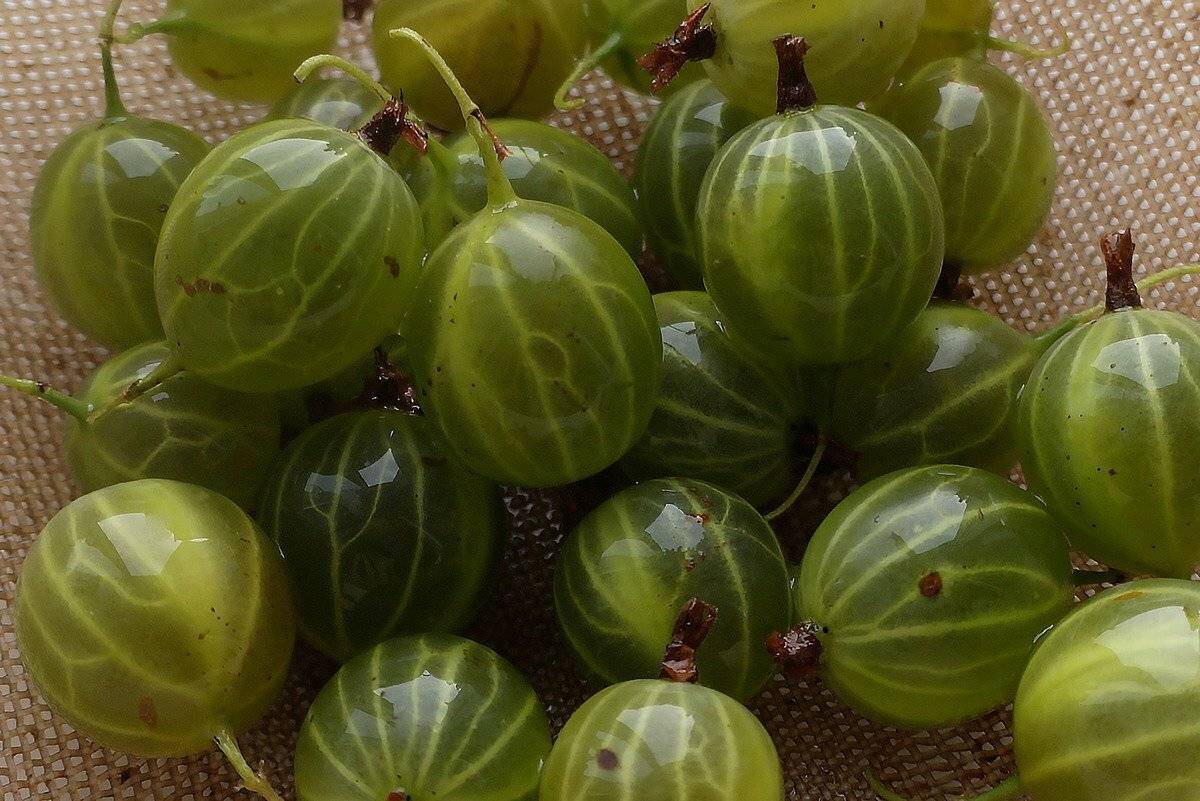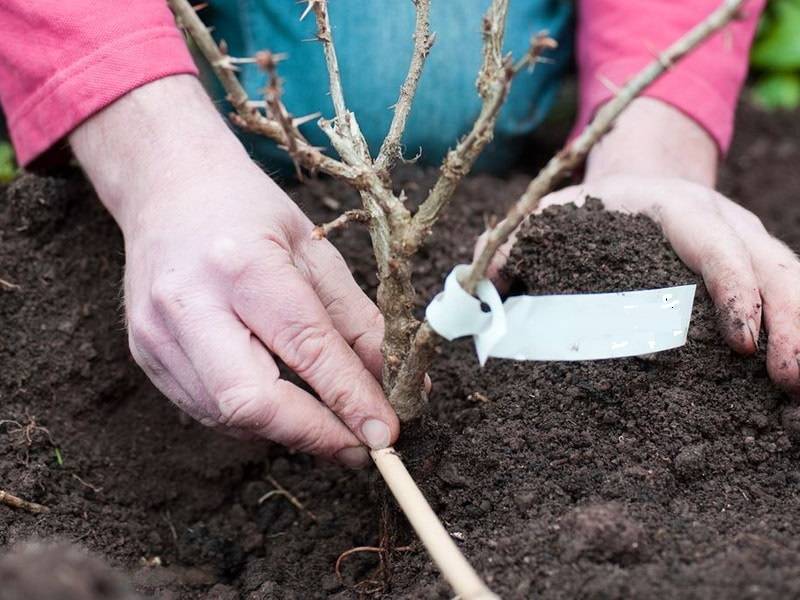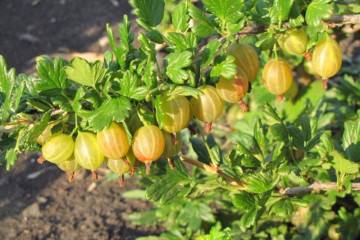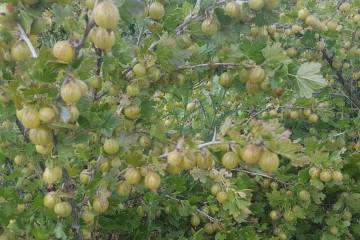Gooseberry Ural emerald - features and characteristics of the shrub
Content:
A gooseberry variety called Emerald was created for growing in harsh climatic conditions. The frost-resistant variety does not require complex maintenance. Its berries contain many nutrients. The following is a description of the Emerald gooseberry, as well as information on growing crops in the garden.
Description and characteristics
Ural Emerald is a gooseberry variety grown specifically for cultivation in Siberia and the Urals. It is also cultivated in warmer regions, including the Moscow region.
Origin story
Gooseberry Emerald was bred by the Russian specialist V.S.Ilyin at the South Ural Research Institute. He crossed Pervenets Minusinsk and Nugget and got an unpretentious gooseberry variety adapted to growing in harsh conditions.
Characteristics of the bushes
Gooseberry shoots reach a height of 1.2-1.5 meters. Annual branches are green, perennial ones are light brown. Shoot studiness is low. Leaves are green, five-lobed. It is a self-fertile variety: it does not need to plant pollinating varieties nearby.
Characteristics of berries
The flowers are pink, inconspicuous. The fruits are round, yellow-green in color. Their mass varies between 3.5-7.5 grams. The peel is transparent, the flesh is thick. The seeds are black. The berries taste sweet-sour, juicy, aromatic.
Features of the variety
The harvest must be collected on time, otherwise the berries will begin to crumble to the ground. If the weather is too dry and hot, they can be baked directly on the plant.
Ripening period and yield
The first berries from the bushes begin to be removed at the end of June. The mass harvest takes place in July. One plant can grow 4-5 kilograms of fruit.
Taste qualities
Experts note the balanced taste and delicate aroma of berries. Sweet, slightly sour fruits are in great demand on the market. The tasting score is maximum.
Drought resistance and frost resistance
Emeralds are not afraid of frosts down to -35 ° С. In more severe conditions, the culture is harbored. Drought resistance is weak. To obtain a high-quality harvest, gooseberries require timely watering.
Disease and pest resistance
Ural gooseberry has good immunity. With a close location of groundwater, dry summer, it can be affected by fungal diseases. Under unfavorable conditions, the bushes can be attacked by goldfish, aphids and spider mites.
Using berries
The fruits are recommended to be used fresh. They contain a large amount of nutrients. In addition, delicious, aromatic jam is prepared from berries. The fruit can also be frozen for consumption in winter.
Advantages and disadvantages
The positive qualities of the variety include the following:
- unpretentious care;
- frost resistance;
- good immunity;
- low studding;
- abundant fruiting;
- excellent taste of berries.
The negative qualities of gooseberries include demanding watering. With untimely irrigation, the berries can become smaller, baked on the bush.
Planting young seedlings on the site
Bushes are purchased in a garden center from trusted sellers or in a plant nursery. Young bushes intended for planting should have at least 3 shoots. The age of the seedlings is 1-3 years. The branches should be resilient, free from signs of disease and pests.
Landing time and pattern
The Ural Emerald gooseberry is planted on the site in spring or autumn. If seedlings are purchased with a closed root system, they can be planted at any time. Bushes are located at a distance of at least 2 meters from each other.
Choosing a landing site
The area is selected well lit by the sun. Otherwise, the berries will become smaller, they will not collect the required amount of sugars. Groundwater at the landing site should not lie close to the ground surface.
The territory is cleared of garbage, dug up. If there is heavy soil on the site, peat, compost, humus are added to it. 2-3 weeks before planting, dig holes 40 cm wide and 60 centimeters deep.
Planting process
Gooseberries are planted in a permanent place as follows:
- 200 grams of wood ash is poured into the bottom of the holes.
- Fertile soil is poured.
- The seedlings are placed in the middle of the holes, the root systems are straightened .;
- Fall asleep with earth, lightly tamp.
- Water abundantly.
If the shoots are too long, they are shortened to 25 centimeters.
Features of seasonal care
Crop care consists in watering, feeding, preventive treatments.
Watering and feeding
Gooseberries need to be watered in a timely manner, otherwise the berries will lose their presentation, and their taste will become worse. The bushes especially need moisture before flowering, during the formation of fruits, after fruiting.
In the year of planting, there is no need to fertilize the land. Then in the spring it is fed with nitrogen. Before flowering and at the very beginning of fruit formation, a complex mineral fertilizer is applied.
Mulching and loosening
After watering, the soil around the gooseberry is loosened. At the same time, weeds are removed, contributing to the appearance of diseases and pests. To preserve moisture, the root circle is mulched with peat, humus, straw.
Using supports
Shoots of thornless gooseberries are erect, do not bend low to the ground under the pressure of the berries. Therefore, there is no need to install supports.
Preventive treatment
In the spring, to prevent the appearance of diseases, the bushes are treated with antifungal drugs. For this, copper and iron vitriol, Fundazol, Fitosporin are used. At the end of summer, spraying is repeated.
Pruning
Bushes with 3-4 shoots are planted. Each year, 4 new branches are allowed to grow, the rest are cut off. Over time, old shoots that begin to bear fruit poorly are completely removed.
Preparing for winter
Emerald gooseberry tolerates frost well, so it does not need shelter. In the middle of autumn, the culture is watered abundantly with water. With the onset of cold weather, the root circle is mulched, covered with spruce branches.
Reproduction
You can dilute gooseberries on the site with cuttings or layering.
By cuttings
The procedure is carried out after the gooseberry blossoms. For this, 1-year-old shoots with a heel are cut off, planted in a container, and covered with foil. When the cuttings start to grow, the shelter is removed. The grown bushes are planted on the site.
Layers
Reproduction in this way is carried out as follows:
- digging grooves;
- bend the shoots in them;
- attach them with staples;
- watered;
- covered with earth.
When shoots appear from the layers, they are allowed to grow. Then they are separated from the mother plant, transplanted to a permanent place.
Pest and disease control
The culture can be affected by fungal diseases. Fungicides are used to combat pathogenic microorganisms. Insecticides are used against harmful insects. Experienced gardeners recommend spring spraying of bushes with hot water.
Emerald is a gooseberry with delicious yellow-green berries. He is unpretentious in care. It needs to be watered, fed, preventive spraying done on time. If the gardener wants to propagate the culture on the site, he can easily do this by cuttings or layering.




















